Digikam/Processament RAW bàsic
Processament RAW bàsic en digiKam
Transcrit des de l'article d'en Dmitri Popov, l'11 de març de 2013
Per aquest projecte, utilitzarem una fotografia de la famosa catedral de la Sagrada Família a Barcelona, Espanya (podeu descarregar el fitxer RAW des de https://www.box.com/s/cq3uknqt54o3usf1jg3r). La fotografia es va prendre amb una càmera Canon PowerShot S90, i el fitxer RAW presenta diversos defectes obvis, incloent una visible distorsió de barril, àrees subexposades i soroll. En altres paraules, aquest fitxer RAW en particular és perfecte per retocar-lo al digiKam.
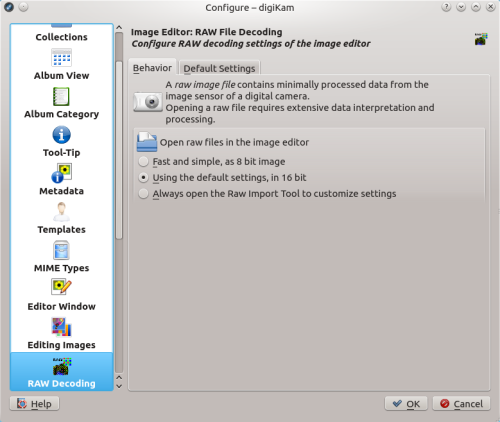
Abans de començar, assegureu-vos que digiKam està configurat per obrir fitxers RAW en el mode de 16 bits utilitzant les preferències per omissió. Per això, escolliu i canvieu a la secció . Activeu l'opció i premeu . Després obriu el fitxer RAW per edició utilitzant la tecla F4 (o escolliu ).
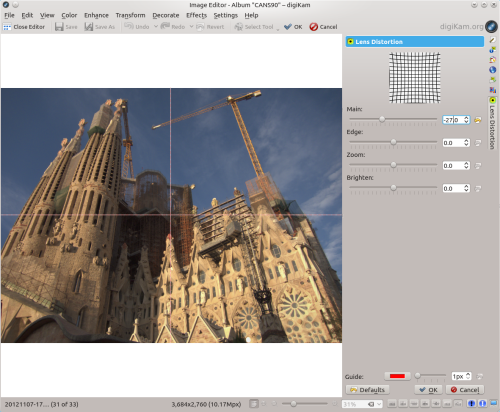
The first order of business is to fix the lens distortion. Since the LenFun library used by digiKam for automatic lens correction doesn’t have a lens profile for Canon PowerShot S90, you have to fix lens distortion manually. Choose , then use the slider to set the correction value. Alternatively, you can enter the exact value in the field next to the slider. For this particular file, the -27 value should do the trick. Check the preview image to make sure that the distortion is properly corrected, and press to apply the correction.
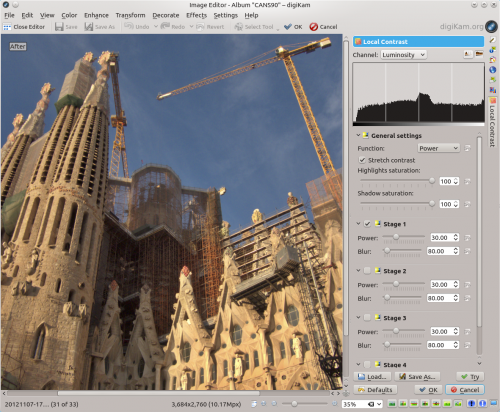
Although the Canon PowerShot S90 did a respectable job of producing a well-exposed image, the photo still has slightly underexposed areas. The easiest way to fix this problem is to use the Local Contrast tool (). The default values should do the trick, but feel free to experiment with different settings. But don’t try to push them too far, as the final result may look unnatural. Also, before you start modifying the default settings, save them as a preset using the button. Later, you can restore the original settings from the preset using the button.
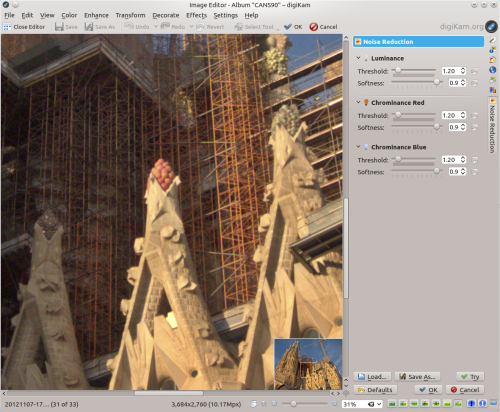
Next stop is the Noise Reduction tool (). While the default noise reduction settings work fine in most situations, you might want to adjust them to achieve even better results. When experimenting with different noise reduction settings, it’s a good idea to switch to the 100% crop, which gives you a much better view of the noise reduction effect. To do this, select from the drop-down list. You can then use the scrollbars to view the desired part of the photo. Alternatively, you can use the button in the lower-right corner of the preview window to display a thumbnail of the photo and pan by dragging the red square to the desired area in the image. To preview the noise reduction result, use the button.
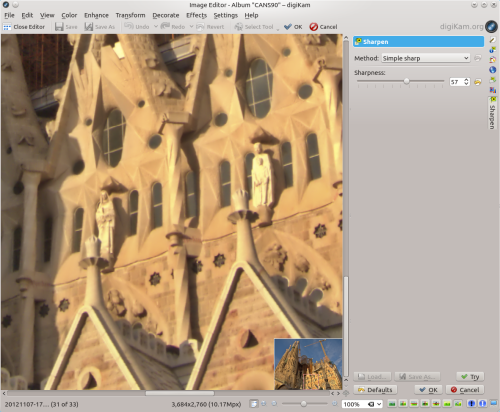
Finally, the photo could use some sharpening, so choose , adjust the sharpness level using the , and press to preview the result. Again, you might want to switch to the 100% crop for a better preview.
